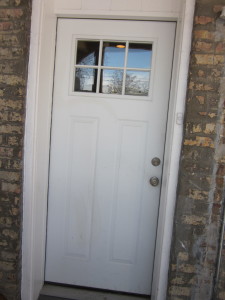 …. Close the language-door, and open the love-window. The moon won’t use the door, only the window. (From Some Kiss, Jalal ad-Dīn Muhammad Rumi)
…. Close the language-door, and open the love-window. The moon won’t use the door, only the window. (From Some Kiss, Jalal ad-Dīn Muhammad Rumi)
I saw a play the other week. It was about an impetuous cross-cultural love affair between a self-absorbed, slightly brash American do-gooder woman and a seemingly gentle Tibetan physician. The story of their relationship was dotted with references to famous Rumi lines, including a few from one of my favorite poems, Some Kiss.
As an audience member, I wondered a little what Rumi’s words about sacred union had to do with the characters’ actions. As a fan of Rumi, I was reminded again about his wonderful indirect way of speaking. As a writer, my head filled with thoughts about windows and doors.
While there are many categories and styles of windows and doors, I’d venture that most of our associations involve metaphors. We’ll often use use images of doors and windows to represent other things. And how we speak of interacting with windows and doors, in the physical world, seems to crystalize turning points in our paths or important perspectives.
Definitions describe both as concrete structures that can be opened or closed to control access. Each structure has different styles. Doors can be hinged or sliding or revolving, overhead or overlapping styles. Windows can be stained glass, casement style, double paned, transom style, louvered or made for vehicles. Skylights are also considered windows.
Doors can be swung or cracked open, slammed closed or simply shut tightly. Windows can be clear or foggy, ventilating or stifling, protective or flimsy (as barriers).
Doors and windows are unique types boundaries. And don’t we tend to define ourselves nearly as much by our boundaries as we do by our qualities? Windows and doors are thresholds to different experiences.
There are doors to … one’s heart, to consciousness, to wisdom, to freedom. Open doors can signify hope, new opportunities. Closed doors can signify mystery, or privacy, or punctuate our decisions as reaching points of no return.
The image of a window is often used to suggest fresh air, moving in a new direction, curiosity or the ability to see the essence of something. Images of windows often are used to represent people’s psyches. They can be fragile or transparent or without guile and pretense.
Now, as I am thinking about doors and windows, I am thinking about the metaphorical and the concrete. Sensing there is a window or a door between me and something or someone or some understanding seems only to matter relative to my position and my beliefs. Am I inside or outside? Can I traverse the threshold at will or do I feel bound and restricted by it?
Sensing the significance of a boundary is important. Believing I’m capable of moving beyond one is no small thing.


I really Love this about Doors and windows. This theme comes into my Art recently, and also, time and again. There are Doors I close and windows I open and walls I need, the boundaries. There are boundaries I do not want in my life. As with the heart…they come to me through experiecing a love that I want more of… it is held back from me by the borders of my lover, this makes my art more necessary, but difficult to arrive, bring’s emotions. I desire joy not yearning as a basis for my life and work, I dislike melancoly, and being alone in the crowds of City. When my space is empty, full of the of a 4 lane, main artery….then I draw a view to the Sea through shutters.
It’s a great Blog. I’ll make time for it…